Blue Crown
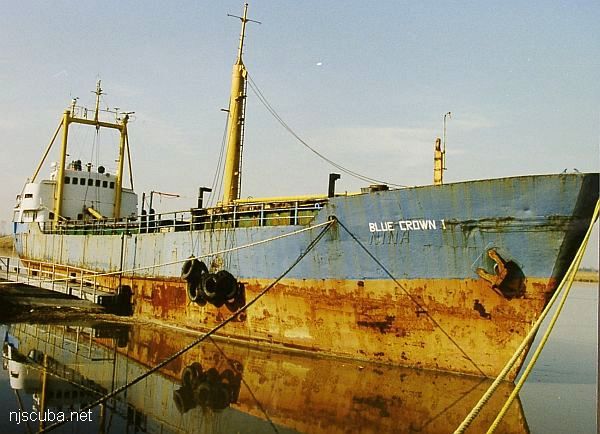
- Type:
- artificial reef, freighter, Panama
- Specs:
- ( 205 x 40 ft )
- Sponsor:
- Coors Brewing Company, US Army, Artificial Reef Association, Sportfish Fund, US Customs Service
- Sunk:
- Friday June 10, 1994 - Atlantic City Artificial Reef
- GPS:
- 39°14.138' -74°12.357'
- Depth:
- 100 ft

intact, upright, loaded with tire units
The Blue Crown was seized for drug smuggling in 1991 in one of the biggest drug busts in U.S. history - over 11,000 pounds of cocaine. She became a liability to the government when she sank at the dock, and so was given to the Artificial Reef Program. Blue Crown / Nina does not show up in any ship registry - not surprising for a drug smuggler.
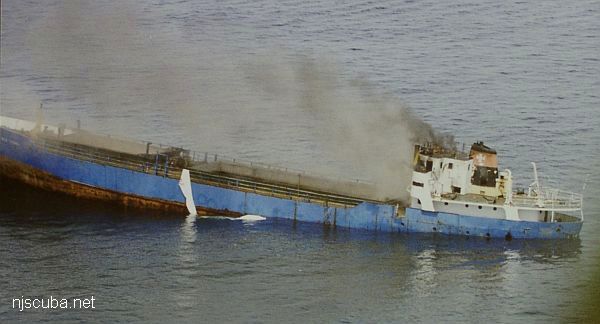
PANAMANIAN FREIGHTER SEIZED IN COCAINE SMUGGLING CASE
From Wire and Staff Reports | Jul 28, 1991
Federal agents seized a Panamanian-flag containership and arrested its captain and eight crew members, who were charged with unloading more than five tons of cocaine to a fishing vessel this week, authorities said last week. The cocaine and the fishing boat were seized July 21 off Long Island, N.Y. Investigators believe the shipment was the first joint operation between New York's organized crime syndicate and Colombian drug lords in the Cali cartel.
U.S. Attorney Andrew Maloney said the so-called "mother ship," a freighter named the Blue Crown, was seized early Wednesday in the Delaware Bay off New Jersey. Federal agents determined through nautical records and other evidence, including a paint streak on its side, that the Blue Crown was the ship used to transfer cocaine to the fishing boat. The Blue Crown sailed from Venezuela July 2.
( The name Blue Crown, does not appear in the 1991-92 edition of Lloyd's Register of Ships, an authoritative listing of all ships in the world. Both Lloyd's Register of Shipping in London, which publishes the directory, and Lloyd's of London Press, said Friday they had no information on a ship with that name. )
One of the fishing boat owners, who is facing drug charges stemming from the earlier seizure, was reported to be associated with the Gambino crime family allegedly headed by John Gotti. However, Mr. Maloney said he had "no evidence at all" that Mr. Gotti was connected with the shipment, which, at more than 10,770 pounds, was said to be the largest ever seized in the New York area.
The crew members, including the ship's Sudanese captain, were recruited in Colombia, Mr. Maloney said. They were to be arraigned in Camden, N.J. The defendants face life sentences and fines of $4 million each if convicted of drug charges.
Building Better Reefs
Story and Photos by SSgt. Zeke Allen and 1st Lt. Gary Sheftick
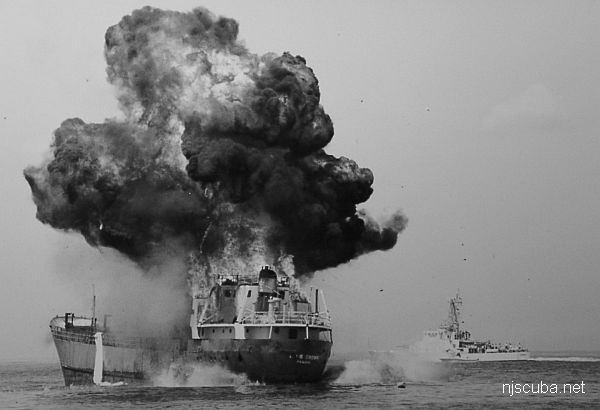
With one fiery bang, the Army capped a victory in the drug war, helped save marine life, and boosted a community's fishing and tourism industries. The explosion, which sank the Panamanian-registered freighter Blue Crown, was the finale of the third-largest drug bust in U.S. history. The Coast Guard and U.S. Customs officials seized more than 10,771 pounds of cocaine following a wild two-day chase in 1991. Officials found the cocaine hidden in boxes marked "fresh fish."
This summer, Army tugboats towed the freighter to a site 12 miles east of Atlantic City, N.J., where it was sunk in 95 feet of water to form an artificial reef. The New Jersey reef was created close to shore for use by sports fishermen and divers, but deep enough to allow navigation by deep-water ships. Creating artificial reefs is one way to capitalize on fewer training dollars while gaining valuable experience for the 97th Army Reserve Command's 949th Transportation Company, based in Curtis Bay, Md.
"We don't usually tow ships, " said Maj. David Maas, referring to his unit's training missions. Maas, the unit's commander, said training normally means towing barges. However, in war, they would tow ocean-going ships and salvage damaged vessels. The 949th's tugboats towed the 220-foot Blue Crown from Philadelphia to Atlantic City. But before the journey, the freighter was cleaned and drained of petroleum products at a shipyard near Philadelphia. A Coors Brewery $10,000 donation and a New Jersey Reef Program $6,500 donation helped render the Blue Crown environmentally safe.
At the reef site, New Jersey state police and the Atlantic City bomb squad placed plastic explosives below the freighter's waterline. A fireball plumed into the sky as the explosives were detonated. "I guess that's what you would call the climax of my career -- the drugs seized, two men in jail, the ship at the bottom of the ocean, " said retired U.S. Customs Special Agent Bill Braker as he watched the freighter's bow slip underwater. Braker had been in charge of the case.
After the ship disappeared, six members of the 949th's diving section jumped from UH-1H helicopters into the blue water. They had been tasked to map how the freighter settled onto the ocean's floor, and to note hazards to recreational divers. When the men entered the water they began another training-related mission -- harbor clearance. "If there's a wreck in the harbor, we have to find out how deep it is, and how it's positioned, " said Maas, whose diving unit is one of two in the Army Reserve. "They could also assist in removing or blowing it up, if it's a hazard."
Explaining the importance to the Army of units like the 949th, the 97th's commander, Maj. Gen. George Kundahl, said the Army welcomes missions that provide worthwhile training while benefiting the community and the environment. The projects were examples of "public and governmental cooperation ... with a minimum of investment from the taxpayer, " said William Figley, New Jersey Artificial Reef Program manager.
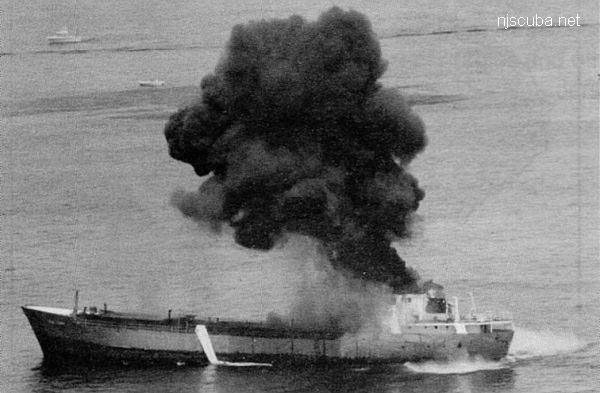
Excerpted from the US Army website

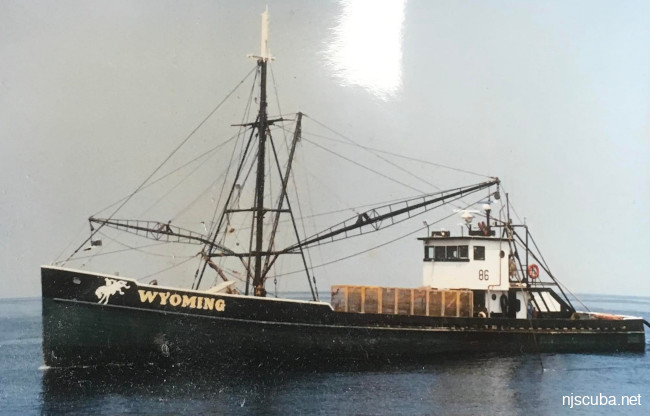
Questions or Inquiries?
Just want to say Hello? Sign the .